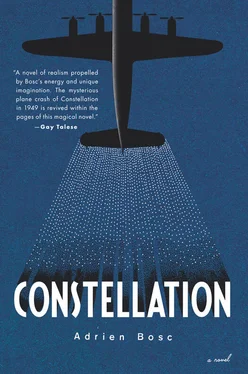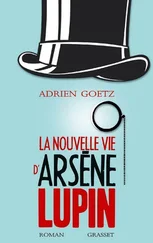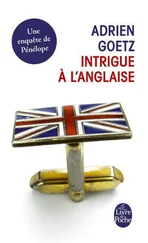His eccentricity was engraved in the stone of a hexagonal villa built in Palm Beach in 1936 and unironically christened “La Folie Monvel,” the Monvel Folly.

On this night of October 27, Monvel is bringing his periodic exiles to a close. Now almost seventy years old, he has vowed never to set foot in the United States after this trip. He has sold the Folie Monvel, packed up his other life in trunks and shipped it home, and the painter is looking forward to his retirement in France. A few months earlier, a project had amused him for a while. In February 1948, he received a strange call from RKO Pictures asking if he would drop everything and paint a portrait of Ingrid Bergman for the release of Joan of Arc . For several days, in a suite at the Hampshire House hotel in New York City, the star had posed for him holding a sword. Her admirer since seeing Hitchcock’s Notorious , he secretly took pleasure in thumbing his nose at his family history. His father, Maurice Boutet de Monvel, an illustrator of the late nineteenth century, was famous for his Jeanne d’Arc , an album of historical sketches with watercolor illustrations reproduced in zinc plate. The circle closes, he told himself. An unwitting gift from RKO Pictures.
In the fall of 1949, the papers were singing the praises of Victor Fleming, Joan of Arc’ s director. André Bazin called the film “faithful and moving.” But Monvel had not had time to attend a screening, he was finishing a commission for the socialite Mary Rogers, which was due at the end of October. The fact that the painter was among the passengers of F-BAZN was the result of a strange series of events. Politeness, that organized indifference, was playing one last trick on him. Monvel had been scheduled to take his final trip with the actress Françoise Rosay aboard the flight leaving Wednesday, October 26. During boarding, the actress had so much excess luggage that Monvel graciously offered his seat to her. Happy to make the gesture, he assured her that a day’s delay would in no way affect his schedule, that any failure on his part to help would upset him far more than missing the plane. Making elegant use of a bon mot, he added, “Remember Bergson, who said that the spirit of politeness is no more than a kind of flexibility. And this evening, dear Françoise, you are giving my empirical mind a chance to prove it.”
5. “I Have the Field in Sight!”
Airplanes weave the telegraph lines.
— Philippe Soupault, “Dimanche” (Sunday)
In the airplane, the cabin crew are preparing to wake the passengers in the sleeping berths. It is two in the morning, and the flight plan calls for Air France’s F-BAZN to land in forty-five minutes on the tarmac at Santa Maria for refueling. Other than a little chop, the flight has been peaceful, uneventful. Roger Pierre radios the airport with the estimated time of arrival: 2:45 a.m. A few minutes later, the Portuguese control tower confirms clearance to land. At the controls, Jean de La Noüe pushes the stick forward, then stabilizes the craft at 8,800 feet above sea level. It is only the third time the pilot has landed in the Azores. He normally flies the northern route and touches down in Ireland, where the crew make full use of the duty-free shops, having nicknamed Shannon “Whiskey Airport.”
Santa Maria is one of nine islands in the Azores, volcanic outcrops in the middle of the ocean. Its airport looks like a rural runway, the landing strip on an airplane carrier. Windswept, the archipelago has always been a port of call, whether for oceangoing or airborne craft. The last step before the big leap. The outbound point of departure and the point of return on coming back.
Thirty minutes before arrival, F-BAZN radios the control tower to signal a ten-minute delay in the agreed schedule and to request permission to continue its slow descent to 5,000 feet. Permission is granted, and the tower describes the weather on the ground, clear skies and perfect visibility. In the cockpit, Jean de La Noüe and his two copilots, focused and confident, proceed with final maneuvers, all the more reassured by the weather conditions on the island. At 2:50 a.m., F-BAZN confirms its arrival time. In five minutes the plane will touch down at Santa Maria. After receiving its final clearance, as per protocol, the plane approaches at 3,300 feet. Landing particulars are relayed to the Constellation, wind speed and direction, as well as the runway number. The pilot acknowledges: “Roger.” The radio alphabet captures the imagination, as do the esoteric utterances of marine weather radio: Dogger, Fisher, hectopascal, freshening southwest, Viking, Beaufort scale, tidal bore, the celebrated Azores High. And the response, in encrypted language: Alpha, Bravo, Charlie, Delta, Echo, Foxtrot, Golf, Hotel, India, Juliette, Kilo, Lima, Mike, November, Oscar, Papa, Quebec, Romeo, Sierra, Tango, Uniform, Victor, Whiskey, X-ray, Yankee, Zulu. Technology and its language, those formulas produced with a magic wand. Context aside, the difference between advanced technology and magic is negligible, the point being to levitate an airframe of several tons.
The passengers are strapped in, Marcel Cerdan jokes with Jo Longman, while Paul Genser stares fixedly out the porthole. Ginette Neveu clasps the case containing her two violins, a Stradivarius and a Guadagnini — a week ago she owned only one. At the front of the airplane, their seat harnesses cinched, the cockpit crew prepare for landing.
Seeing land ahead, Jean de La Noüe announces, “I have the field in sight!” The approach to the field is shrouded in thick fog, lights pierce the celestial haze, and the crew is puzzled at the rain and grayish cotton wool enveloping the cabin. Didn’t they say the airport had perfect visibility? The three pilots are perplexed. It must be some uncorrected error in translation. At the navigation table, Roger Pierre and Jean Salvatori check the coordinates transmitted by the ground beacons. Above the monitor, a metal panel screwed into the plastic sidewall reads EMERGENCY EXIT. The runway lights ahead, dimmed by the clouds, signal the approaching airport. The hatches open, the wheel assemblies emerge from the belly of F-BAZN, and the plane drops toward the Santa Maria airfield.
At 2:51:02 a.m. a last message from the tower to the Constellation hangs unanswered.
Under their dress, you’ll find panties, a bra, and, for vanity, a nylon slip.
— Elsa Triolet, The Age of Nylon
A vast confluence of causes determines the most unlikely result. Forty-eight people, forty-eight agents of uncertainty enfolded within a series of innumerable reasons, fate is always a question of perspective. A modelized airplane in which forty-eight story fragments form a world. A survey, hurried and in motion, whose description goes beyond the very conformity of studies. A census of men, of women. A normal proportion and a sociological sample, as Charlotte Delbo wrote in Le Convoi du 24 janvier , the account of her convoy to Auschwitz — 230 women, 230 civil records, rows of facts, dates, places, which, by the plain power of their arrangement and sequence, are freed from the strait-jacket of form. Lives, tiny and huge, matryoshka dolls. Six years earlier, Amélie Ringler could have been one of those women. She could have put a pile of tracts about the Resistance into her shoulder bag, become a political prisoner, been herded into the transit camp at Romainville, into the convoy, the extermination camp. Amélie would have been twenty-one years old. The city of Mulhouse was no longer Mulhouse but Mülhausen, in territory annexed by the Third Reich. Eighteen years old when Hitler and his retinue paraded through the streets. From the Schlucht Pass, the straight-armed procession of the Wehrmacht had wound its way into the old city. Within a few days, all the streets had German names. The rue du Sauvage (Street of the Savage) had become Adolf-Hitler-Strasse, a perfect translation that remained in place only long enough to spark general hilarity. The name was quickly changed to the more literal Wildemannstrasse. Twenty-two years old when, on the morning of November 21, 1944, she watched in astonishment as the Senegalese 6th Rifle Brigade and French troops entered the city under the command of General Lattre de Tassigny. Two days of fighting until, on November 23, the Moroccan 7th Rifle Company and a supporting tank unit captured the Lefèbre Barracks, the last German strongpoint.
Читать дальше













